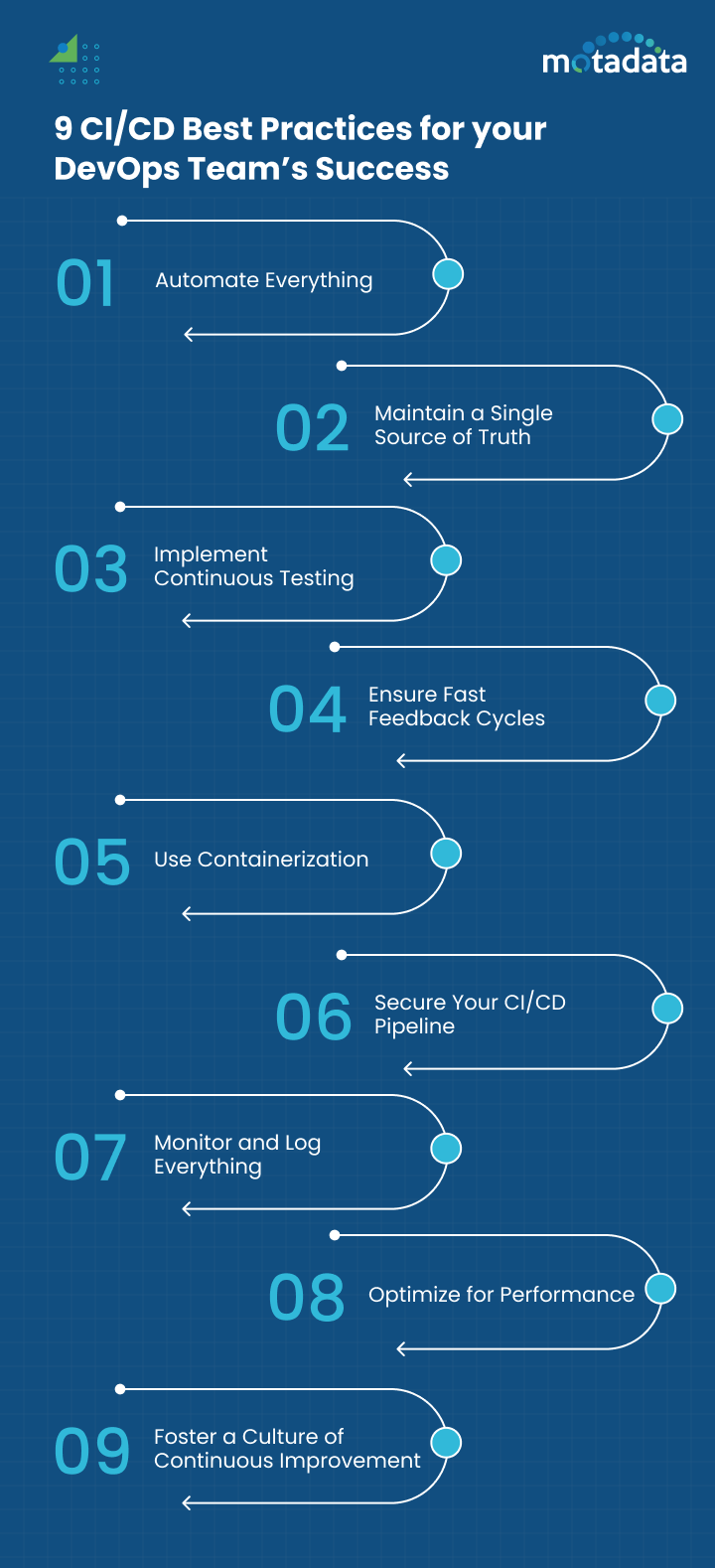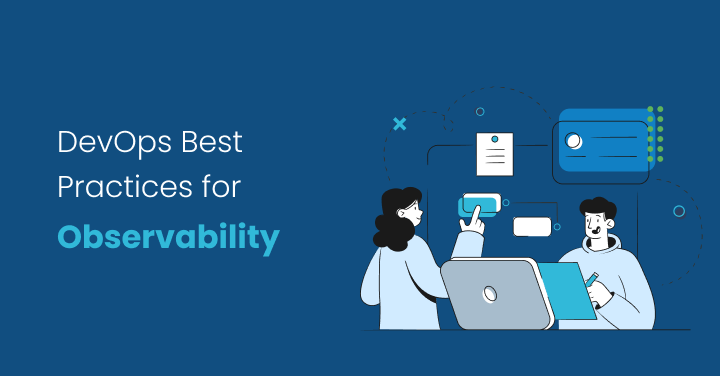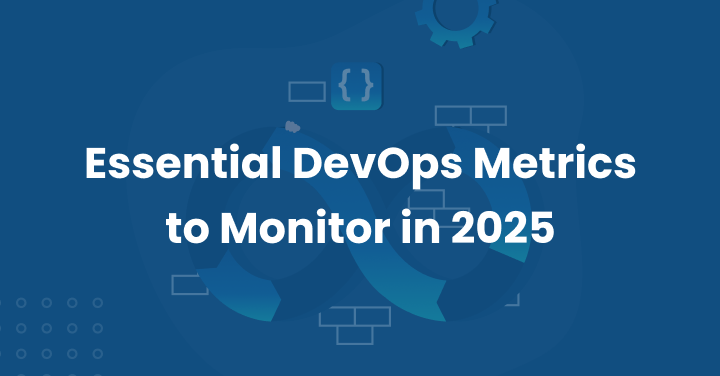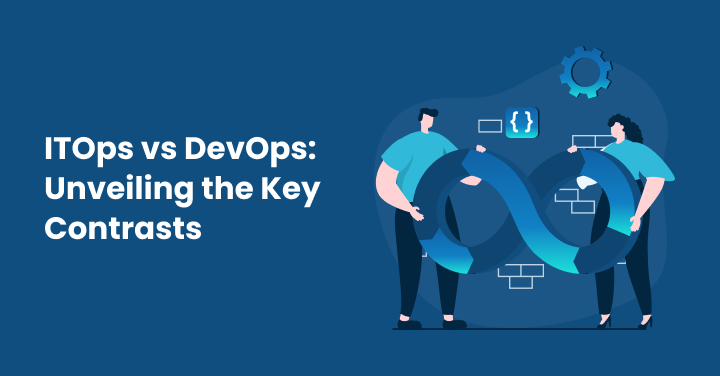Continuous Integration (CI) and Continuous Deployment (CD) have become quite popular in the software development environment for they emphasize automation and streamlined workflows.
By implementing CI/CD best practices, developers will be able to deliver high-quality software faster and enhance productivity.
However, the implementation of CI/CD practices is not an easy task, you may require careful planning to execute the process and gain results.
Let us discuss some of the top CI/CD best practices that play a key role in achieving the DevOps team’s success.
Understanding CI/CD
Continuous Integration (CI) and Continuous Delivery (CD) are combined practices used by developers to automatically build and test code changes in a software application or development process.
Modern software development practices use CI/CD to build and ship quality software to its customers.
Every time a developer makes changes to the version control, continuous integration takes care of the testing and code development automatically.
This makes it possible for a development team to find and identify bugs more quickly.
On the other hand, Continuous delivery deploys these automated builds—including code and tests—into test and production environments after running automated tests on them to ensure that are integrating smoothly with the current codebase.
In short, by combining CI and CD practices, modern DevOps processes may release software faster and with more reliability.
Thus, helps DevOps improve team collaboration, expedite product delivery, enhance deployment frequency, reduction in failure rate, quick feature delivery, and streamline the development process, resulting in an increase in their efficiency and quality.
GitFlow and trunk-based development are a few branching strategies that play a key role in managing this process.
GitFlow is a bit complex process for it involves many branches, including master, develop, feature, release, and hotfix, to manage simultaneous work and various development stages.
It basically has one main development branch from which you can create feature branches.
However, not everyone can access the main development branch as it has strict access to it.
Whereas, the trunk-based development method focuses on frequent integrations immediately into the trunk.
This method involves working on a single branch with open access that helps lower overhead but requires discipline to maintain consistency.
You can choose between the two strategies based on the complexity of your project, team size, and release requirements.
CI/CD Best Practices for Software Development
Before implementing CI/CD for your project, it is best to analyze the status of your existing application, deployment process, security features, and its architecture.
With these insights in hand, you can better manage the challenges and deliver faster results.
Further, incorporating the below-listed CI/CD best practices into the process will help ease out the journey of building a healthy DevOps culture.
1. Automate Everything
Rather than manually checking all the codes, developers can now leverage automation tools to run all the repetitive tasks CI/CD pipeline automatically.
CI/CD automates the process of building, testing, and deploying code changes that accelerate the software delivery process.
As a result, your chances of getting manual errors get reduced to a great extent which eventually helps improve code quality.
You can even run automated security scans to find out vulnerabilities in real time.
By detecting application loopholes at an early stage, you can prevent attackers or hackers from getting into the system and disrupting the performance.
Further, to guarantee that the documentation and code are consistent, automate updates to the documentation.
You can automatically run updates that will keep your applications and software more secure and updated with the latest trends.
In simple terms, everything can be automated which will eventually prevent human error, boost your productivity level, and accelerate the time to market for your apps and software.
2. Maintain a Single Source of Truth
Establishing a single source of truth is crucial for an efficient CI/CD workflow.
By ensuring that everyone in the team is working from the most recent version of the code, confusion, and disputes are minimized.
Developers can work together effectively without creating separate versions by using a shared repository as the authoritative source.
When all team members are working with the same set of code changes, the deployment process is streamlined and code quality is improved, creating a more cohesive development environment.
3. Implement Continuous Testing
Continuous Testing in the CI/CD process is highly crucial for it provides quick feedback to developers on the bugs and errors.
By running tests automatically at each stage, developers can identify issues quite early and improve code quality as well as establish code reliability.
Unit Tests, integration tests, and end-to-end tests are a few types of tests that developers can perform to improve software quality.
Unit tests focus on code quality and provide quick feedback. Integration tests, on the other hand, allow developers to evaluate the working of each component of the application and the interactions between the different modules.
End-to-end tests are another form of test that validates the complete application workflow by simulating actual user scenarios.
Also, there are several software testing tools and frameworks available on the market that support continuous testing, such as Selenium, JUnit, and Jenkins.
With the help of these tools, developers may improve their testing practices and maintain the reliability of the CI/CD pipeline.
4. Ensure Fast Feedback Cycles
Feedback loops in the CI/CD pipeline can be a great success for it allows developers to track the issue initially and resolve it promptly.
You can integrate either unit tests or code automation functionalities into your pipeline that may help them access quick feedback regarding the code change quality.
With this information in hand, you might get alerted about any pipeline failure in real time. Further, an efficient feedback loop will help maintain efficiency and enhance code quality.
For speeding up the feedback cycle process all you need to do is eliminate the unwanted steps from the build process and optimize it well.
As a result, developers can spend less time waiting for feedback when builds happen more quickly. Secondly, running parallel tests and performing incremental builds will also help provide quick feedback.
Your software quality will increase and iterations will happen more quickly if your feedback loops are optimized.
5. Use Containerization
By implementing containerization practices in the CI/CD process, developers can provide better consistency and overall efficiency.
Containerization is a popular practice that involves packing applications as well as their dependencies into an isolated container to run them reliably when shifted to another computing environment.
By optimizing the deployment procedure, developers can deliver the software faster and reliably.
Further, you can scale these containers as per the need. For example, in the case of workload fluctuation, scalability can be useful.
Another advantage of using containers is it helps keep applications separate, which also guarantees that each one operates in its own environment and avoids conflicts.
Further, it provides portability and scalability. By adopting this best practice, your team will be more agile and productive.
Docker and Kubernetes are some of the best tools for containerization that you can invest in and make the software development lifecycle simple and easy to manage.
6. Secure Your CI/CD Pipeline
Another best practice that developers must incorporate in the CI/CD pipeline process is robust security measures.
Integrating security features will not only add protection to the application and data but also guarantee integrity and confidentiality.
Make sure it is integrated into each stage in the form of code scanning, encryption, strong access controls, or upgrading dependencies on a regular basis to fix issues.
Incorporating security checks and tools like Snyk, OWASP Dependency-Check, and Static Application Security Testing (SAST) can be highly advantageous.
Using these tools and security measures, you can scan code for vulnerabilities, ensure full-time security, and maintain compliance with industry standards.
7. Monitor and Log Everything
Monitoring and Logging are highly crucial in the CI/CD process as they provide clear visibility into the application code and software development lifecycle.
With the help of this in-depth insight into the application’s performance and health status, developers can detect and resolve issues at an early stage.
With constant tracking of different metrics and deployment processes, developers can mitigate some of the major issues in the CD pipeline in real time and prevent downtime or delay.
Further, comprehensive logging provides insightful data to developers about the complete software delivery process, allowing for timely feedback and quick resolutions.
Implementation of these practices will gradually improve your efficiency level and make it more reliable, thus fostering a culture of continuous improvement.
For continuous monitoring, there are several tools available in the market, for example, Prometheus, Grafana, and ELK Stack. Using these tools, developers can address issues promptly and guarantee smooth operations.
8. Optimize for Performance
Performance optimization is essential when implementing CI/CD best practices for it will help utilize resources more efficiently.
Further, it will help maintain a high development speed at all stages. Make sure your continuous integration (CI) system is effective by lowering build times and deployment delays.
To expedite deployment procedures, make use of container images. To increase efficiency, simplify processes, automate jobs, and pay attention to performance indicators.
You can also boost software delivery velocity, enhance user experience, and maintain competitiveness by optimizing your CI/CD pipeline for performance.
For continuous integration and delivery to be successful, efficiency is essential.
You can use different build optimization techniques to make the CI/CD pipeline process more effective and productive.
You can implement a caching mechanism to speed up the process and reduce the time essential for building apps.
Secondly, you can perform parallel testing, i.e., running multiple tasks in parallel to reduce the overall time of execution.
You may also use incremental builds to only recreate the changed portions of the codebase.
Implementation of these best practices can surely help your team build and deliver a better application or software.
9. Foster a Culture of Continuous Improvement
Your DevOps team can be more innovative and productive if you promote a culture of continuous improvement.
Set up workshops or training programs to share knowledge or discuss team member concerns.
Further, enhances team collaboration and better communication by celebrating the success of each employee.
You can even run regular feedback loops to collect input from users, team members, or stakeholders.
With this information, you can make more informed decisions as it will help highlight the areas of improvement.
Another way to foster a cultural environment is to provide certificates or run knowledge-sharing sessions that will help the team members stay updated with the latest trends.
A few more practices that will be highly beneficial, include periodic retrospectives for project evaluation and pinpointing areas in the development process.
Secondly, you may invest in easy-to-use collaboration tools, such as Microsoft Teams, Jira, or Slack for smooth communication.
Remember, your team will adjust to changes more quickly and flourish in the ever-changing world of software development if you promote a continuous improvement culture.
FAQs:
Automation helps improve the CI/CD process by minimizing human or manual errors.
When users check the code, they often mistakenly miss out on certain codes which may result in poor software performance.
However, if you implement automation, there are high chances of reducing manual errors.
Further, this feature will help speed up all the repetitive tasks and save time. As a result, your developers and team members can focus on other major areas for improvement.
Faster feedback and a shorter time-to-market are made possible by automated builds, tests, and deployments, which guarantee that code changes are validated and released promptly.
Additionally, automation aids in providing consistent results.
Continuous testing can benefit the CI/CD pipeline process in many ways. For example, with constant monitoring, you can guarantee that all code changes are properly checked and verified throughout the software development lifecycle.
With the integration of a continuous testing process, your development team can identify defective areas or codes of major concern at an early stage.
Further, these insights can help improve the quality of code by reducing errors and bugs during the production stage.
It also provides quick suggestions and feedback to developers that help facilitate more rapid iterations and productive development cycles.







